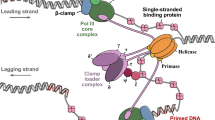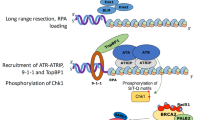Abstract
The major structural aberrations of DNA induced by a cis-diammineplatinum (II) 1,2-d(GG) intrastrand cross-link (CPT) have been known for decades. To gain deeper insights into the structural dynamics of the sequence-dependent DNA distortions adjacent to the CPT adduct, we employed molecular modeling and molecular dynamics (MD) simulations. The structural dynamics of native (N-DNA) and cisPt 1,2-d(GG) crosslinked (CPT-DNA) in the form of symmetric 36 nt d(G2T15G*G*T15G2)●C2A15CCA15C2) oligonucleotide duplexes is compared. The selected sequence context enabled tracking of the origin of the DNA axis curvature at the YpR flexible points (N-DNA), the enhancement of axis bending, and further distortions due to steric/electrostatic perturbations arising from the CPT-crosslink. In addition to the known structural distortions of CPT-DNA: helix bend towards the major groove; local helix unwinding; high roll angle between cross-linked guanine bases; and adoption of A-form DNA on the 5′-side of the CPT-crosslink (TpG junction); our results show the existence of a singular irreversible and reproducible conformational rearrangement, not previously observed, resulting in two stable CPT-DNA1 and CPT-DNA2 conformers. The CPT-DNA2 conformation presents an enhanced DNA axis bend and a wider and shallower minor grove with increased solvent accessibility within the modified site. It is concluded that the polymorphous (unstable) DNA environment near the cisPt 1,2-d(GG) unit in synergy with specific dynamic events, such as prolonged minor groove retention of particular Na+ ions and water redistribution within the d(TG*G*T) site, together with the formation of extra and more stable H-bonds between Pt(NH3)2 amines and neighboring nucleotides, are cooperatively responsible for the initiation of the conformational rearrangement leading to the CPT-DNA2 conformer, which, surprisingly, closely resembles the HMGB1-bound CPT-DNA structure.

Superimposed averaged structures of normal (N-DNA, green) and cisplatin intrastrand cross-linked (CPT-DNA, orange). Global DNA axes: N-DNA (blue beads); CPT-DNA (red beads); PT (yellow sphere); crosslinked dGs viewed from the minor groove (bold)










Similar content being viewed by others
References
Kartalou M, Essigmann JM (2001) Recognition of cisplatin adducts by cellular proteins. Mut Res 478:1–21
Jung Y, Lippard SJ (2007) Direct cellular responses to platinum-induced DNA damage. Chem Rev 107:1387–1407
Ohndorf U-M, Rould MA, He Q, Pabo CO, Lippard SJ (1999) Basis for recognition of cisplatin-modified DNA by high-mobility-group proteins. Nature 399:708–712
Widlak P, Pietrowska M, Lanuszewska J (2006) The role of chromatin proteins in DNA damage recognition and repair. Histochem Cell Biol 125:119–126
Ugrinova I, Zlateva S, Pashev IG, Pasheva EA (2009) Native HMGB1 protein inhibits repair of cisplatin-damaged nucleosomes in vitro. Int J Biochem Cell Biol 41:1556–1562
Visse R, de Ruijter M, Brouwer J, Brandsma JA, van de Putte P (1991) Uvr excision repair protein complex of escherichia coli binds to the convex side of a cisplatin-induced kink in the DNA. J Biol Chem 266:7609–7617
Takahara PM, Rosenzweig AC, Frederick CA, Lippard SJ (1995) Crystal structure of double-stranded DNA containing the major adduct of the anticancer drug cisplatin. Nature 377:649–652
Todd RC, Lippard SJ (2010) Structure of duplex DNA containing the cisplatin 1,2-{pt(NH3)2}2+−d(GpG) cross-link at 1.77 Å resolution. J Inorg Biochem 104:902–908
Elizondo-Riojas MA, Kozelka J (2001) Unrestrained 5 ns molecular dynamics simulation of a cisplatin-DNA 1,2-GG adduct provides a rationale for the NMR features and reveals increased conformational flexibility at the platinum binding site. J Mol Biol 314:1227–1243
Gelasco A, Lippard SJ (1998) NMR solution structure of a DNA Dodecamer duplex containing a cis-Diammineplatinum(II) d(GpG) Intrastrand cross-link, the major adduct of the anticancer drug Cisplatin. Biochemist 37:9230–9239
Wu Y, Bhattacharyya D, King CL, Baskerville-Abraham I, Huh S-H, Boysen G, Swenberg JA, Temple B, Campbell SL, Chaney SG (2007) Solution structures of a DNA dodecamer duplex with and without a cisplatin 1,2-d(GG) intrastrand cross-link: comparison with the same DNA duplex containing an oxaliplatin 1,2-d(GG) intrastrand cross-link. Biochemist 46:6477–6487
Sharma S, Gong P, Temple B, Bhattacharyya D, Dokholyan NV, Chaney SG, S.G. (2007) Molecular dynamic simulations of cisplatin- and oxaliplatin-d(GG) intrastand cross-links reveal differences in their conformational dynamics. J Mol Biol 373:1123–1140
Bhattacharyya D, Ramachandran S, Sharma S, Pathmasiri W, King CL, Baskerville-Abraham I, Boysen G, Swenberg JA, Campbell SL, Dokholyan NV, Chaney SG (2011) Flanking bases influence the nature of DNA distortion by platinum 1,2-intrastrand (GG) cross-links. PLoS One 6(8):e23582
Rice JA, Crothers DM, Pinto AL, Lippard SJ (1988) The major adduct of the antitumor drug cis-diamminedichloroplatinum(II) with DNA bends the duplex by =40° toward the major groove. Proc Natl Acad Sci USA 85:4158–4161
Bellon SF, Coleman JH, Lippard SJ (1991) DNA unwinding produced by site-specific intrastrand cross-links of the antitumor drug cis-diamminedichloroplatinum( II). Biochemist 30:8026–8035
Sprous D, Young MA, Beveridge DL (1999) Molecular dynamics studies of axis bending in d(G5-(GA4T4C)2-C5) and d(G5-(GT4A4C)2-C5): effects of sequence polarity on DNA curvature. J Mol Biol 285:1623–1632
Pérez A, Lankas F, Luque FJ, Orozco M (2008) Towards a molecular dynamics consensus view of B-DNA flexibility. Nucleic Acids Res 36:2379–2394
Mocci F, Saba G (2003) Molecular dynamics simulations of AT-rich oligomers: sequence-specific binding of Na+ in the minor groove of B-DNA. Biopolymers 68:471–485
Curuksu J, Zacharias M, Lavery R, Zakrzewska K (2009) Local and global effects of strong DNA bending induced during molecular dynamics simulations. Nucleic Acids Res 37:3766–3773
Várnai P, Zakrzewska K (2004) DNA and its counterions: a molecular dynamics study. Nucleic Acids Res 32:4269–4280
Gurlie R, Zakrzewska K (2001) Protein-induced DNA bending: the role of phosphate neutralization. Theor Chem Accounts 106:83–90
Privalov PL, Dragan AI, Crane-Robinson C, Breslauer KJ, Remeta DP, Minetti CASA (2007) What drives proteins into the major or minor grooves of DNA? J Mol Biol 365:1–9
Oguey C, Foloppe N, Hartman B (2010) Understanding the sequence-dependence of DNA groove dimensions: implications for DNA interactions. PLoS One 5:e15931
Fogg JM, Randall GL, Pettitt BM, Sumners DWL, Harris SA, Zechiedrich L (2012) Bullied no more: when and how DNA shoves proteins around. Q Rev Biophys 45:257–299
SYBYL-X 2.1, Tripos International. Certara, St. Louis, MO
Case DA, Darden TA, Cheatham III TE, Simmerling CL, Wang J, Duke RE, Luo R, Crowley M, Walker RC, Zhang W, Merz KM, Wang B, Hayik S, Roitberg A, Seabra G, Kolossváry I, Wong KF, Paesani F, Vanicek J, Wu X, Brozell SR, Steinbrecher T, Gohlke H, Yang L, Tan C, Mongan J, Hornak V, Cui G, Mathews DH, Seetin MG, Sagui C, Babin V, Kollman PA (2008) AMBER 10. University of California, San Francisco,
Pérez A, Marchán I, Svozil D, Šponer J, Cheatham III TE, Laughton CA, Orozco M (2007) Refinement of the AMBER force field for nucleic acids: improving the description of a/g conformers. Biophys J 92:3817–3829
Yao S, Plastaras JP, Marzilli LG (1994) A molecular mechanics AMBER-type force field for modeling platinum complexes of guanine derivatives. Inorg Chem 33:6061–6077
Price DJ, Brooks III CL (2004) A modified TIP3P water potential for simulation with Ewald summation. J Chem Phys 121:10096–10103
Fletcher R, Reeves CM (1965) Function minimization by conjugate gradients. Comp J 7:149–154
Humphrey W, Dalke A, Schulten K (1996) VMD - visual molecular dynamics. J Mol Graphics Modell 14:33–38
Phillips JC, Braun R, Wang W, Gumbart J, Tajkhorshid E, Villa E, Chipot C, Skeel RD, Kale L, Schulten K (2005) Scalable molecular dynamics with NAMD. J Comput Chem 26:1781–1802
Wan H, Hu J-p, K-s L, X-h T, Chang S (2013) Molecular dynamics simulations of DNA-free and DNA-bound TAL effectors. PLoS One 8(10):e76045
Essmann U, Perera L, Berkowitz ML, Darden T, Lee H, Pedersen LG (1995) A smooth particle mesh Ewald method. J Chem Phys 103:8577–8593
Blanchet C, Pasi M, Zakrzewska K, Lavery R (2011) CURVES+ web server for analyzing and visualizing the helical, backbone and groove parameters of nucleic acid structures. Nucleic Acids Res 39:W68–W73
Strahs D, Schlick T (2000) A-tract bending: insights into experimental structures by computational models. J Mol Biol 301:643–663
Goodsell DS, Dickerson RE (1994) Bending and curvature calculations in B-DNA. Nucleic Acids Res 22:5497–5503
Tsui V, Case DA (2000) Molecular dynamics simulations of nucleic acids with a generalized born solvation model. J Am Chem Soc 122:2489–2498
Vlahoviček K, Kaján L, Pongor S (2003) DNA analysis servers: plot.It, bend.It, model.It and IS. Nucleic Acids Res 31:3686–3687
Spitzer GM, Fuchs JE, Markt P, Kirchmair J, Wellenzohn B, Langer T, Liedl KR (2008) Sequence-specific positions of water molecules at the interface between dna and minor groove binders. Chem Phys Chem 9:2766–2771
Zhu X, Schatz GC (2012) Molecular dynamics study of the role of the spine of hydration in DNA A-tracts in determining Nucleosome occupancy. J Phys Chem B 116:13672–13681
Dršata T, Špačková N, Jurečka P, Zgarbová M, Šponer J, Lankaš P (2014) Mechanical properties of symmetric and asymmetric DNA A-tracts: implications for looping and nucleosome positioning. Nucleic Acids Res 42:7383–7394
Lankaš F, Šponer J, Langowski J, Cheatham III TE (2003) DNA basepair step deformability inferred from molecular dynamics simulations. Biophys J 85:2872–2883
Noy A, Golestanian R (2010) The chirality of DNA: elasticity cross-terms at base-pair level including A-tracts and the influence of ionic strength. J Phys Chem B 114:8022–8031
Lavery R, Zakrzewska K, Beveridge D, Bishop TC, Case DA, Cheatham III T, Dixit S, Jayaram B, Lankaš F, Laughton C, Maddocks JH, Michon A, Osman R, Orozco M, Pérez A, Singh T, Špačkova N, Šponer J (2010) A systematic molecular dynamics study of nearest neighbor effects on base pair and base pair step conformations and fluctuations in B-DNA. Nucleic Acids Res 38:299–313
Gantchev TG, Hunting DJ (2010) Modeling the interactions of the nucleotide excision repair UvrA2 dimer with DNA. Biochemist 49:10912–10924
Ramachandran S, Temple BR, Chaney SG, Dokholyan NV (2009) Structural basis for the sequence-dependent effects of platinum–DNA adducts. Nucleic Acids Res 37:2434–2448
Ponomarev SY, Thayer KM, Beveridge DL (2004) Ion motions in molecular dynamics simulations on DNA. Proc Natl Acad Sci USA 101:14771–14775
Spiriti J, Kamberaj H, de Graff AMR, Thorpe MF, van der Vaart A (2012) DNA bending through large angles is aided by ionic screening. J. Chem Theory Comput 8:2145–2156
Stehlikova K, Kostrhunova H, Kasparkova J, Brabec V (2002) DNA bending and unwinding due to major 1,2-GG intrastrand cross-link formed by antitumor cis-diamminedichloroplatinum (II) are flanking-base independent. Nucleic Acids Res 30:2894–2898
Camenisch U, Dip R, Vitanescu SM, Naegeli H (2007) Xeroderma pigmentosum complementation group a protein is driven to nucleotide excision repair sites by electrostatic potential of distorted DNA. DNA Repair 6:1819–1828
Wang H, Lu M, Tang M-S, Van Houten B, Ross JBA, Weinfeld M, Le XC (2009) DNA wrapping is required for DNA damage recognition in the Escherichia Coli DNA nucleotide excision repair pathway. Proc Natl Acad Sci USA 106:12849–12854
Ramachandran S, Temple B, Alexandrova AN, Chaney SG, Dokholyan NV (2012) Recognition of platinum−DNA adducts by HMGB1a. Biochemist 51:7608–7617
Elder RM, Jayaraman A (2012) Role of structure and dynamics of DNA with cisplatin and oxaliplatin adducts in various sequence contexts on binding of HMGB1a. Mol Simul 38:793–808
Acknowledgments
Supercomputer CPU time allocation at the National Supercomputing Center (NSC, Sofia, Bulgaria) and methodological support by its staff and Director (Prof. St. Markov) are gratefully acknowledged.
Funding
This work was supported by the National Science Fund at the Ministry of Education and Science, grant # B01/20–2012 and by a NSERC Discovery grant (DH).
Author information
Authors and Affiliations
Corresponding author
Electronic supplementary material
ESM 1
(PDF 2703 kb)
Rights and permissions
About this article
Cite this article
Gantchev, T.G., Petkov, P.S. & Hunting, D.J. Conformational rearrangement of 1,2-d(GG) intrastrand cis-diammineplatinum crosslinked DNA is driven by counter-ion penetration within the minor groove of the modified site. J Mol Model 23, 278 (2017). https://doi.org/10.1007/s00894-017-3445-2
Received:
Accepted:
Published:
DOI: https://doi.org/10.1007/s00894-017-3445-2




